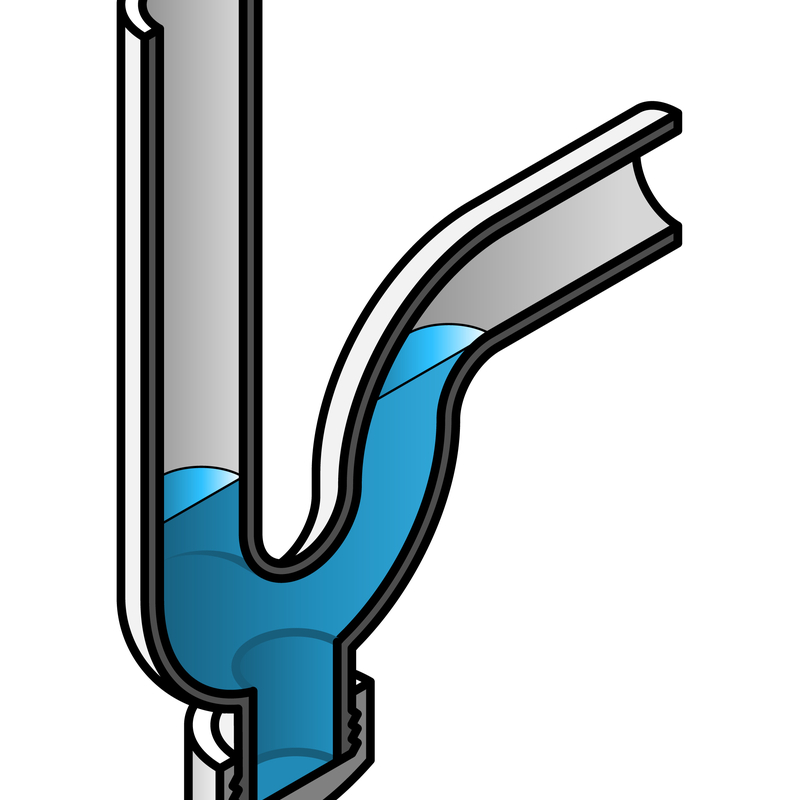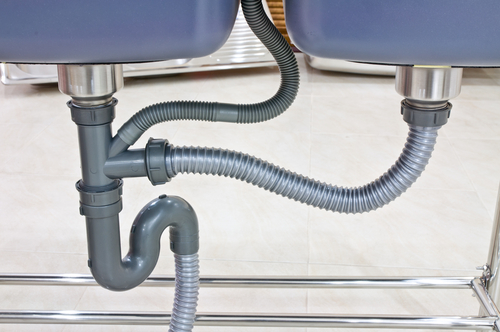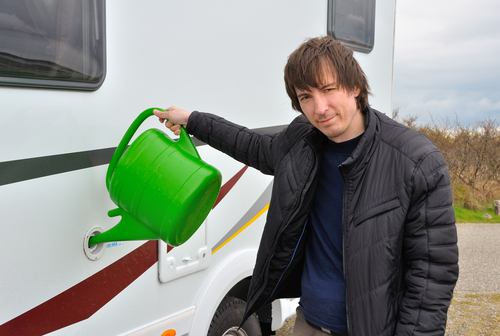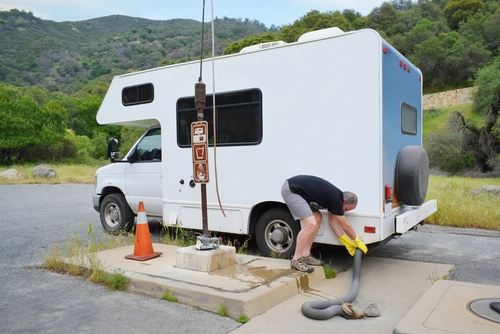Do RV Toilets Have P Traps?

Most residential homes have P traps placed under the sinks of their kitchen and bathrooms. However, have you ever wondered if these traps are installed in the toilets of your Recreational Vehicle? And another thing, what are P traps?
P traps are plumbing fixtures that trap debris that has been washed from the sink and prevent them from clogging your plumbing system. These fixtures also stop sewer gasses from leaking into your home. Unfortunately, RV toilets do not have P traps.
Instead, what most RV toilets have is a holding tank with a vent pipe that releases the odor through the motorhome’s roof. Whenever you flush the toilet, a large flap opens, and then the waste directly flushes down into the RV’s holding tank.
The P traps available for RVs are reserved for sinks. If you’re looking for a good P trap for your RV sink, this P trap with Cup and an expandable inlet pipe will do the trick.
For the best type of toilet for your RV, use the Porta Potti From Thetford.
How Does a P Trap Work?
If you look into the plumbing system of your home’s kitchen sink or toilet, you may notice a pipe section shaped like the letter “P.” The small bend formed by joining two 90-degrees pipes is called the P Trap. This bend catches water, which acts as a seal or barrier that prevents odors and sewer gases from leaking into your house.

As the trapped water gets drained every time water is flushed from the pipes, the air from outside vents equalizes the pressure. By doing so, it prevents the trapped water from being sucked out of the pipes.
P traps can be made from different materials, but polyvinyl chloride(PVC) and steel are the most common ones. Steel is often used for exposed plumbing because of its visual aesthetics. Furthermore, P Traps also have a small cleanout tap at the bottom, which you can use to remove debris that might be clogging the plumbing system.
Most states require buildings to install P Traps in their plumbing system. The great news is that these traps are inexpensive and easy to install. Depending on its size and material, they can go anywhere between $10 and $35.
Whether your RV has supported slide outs or not, make sure to first check if your local jurisdiction requires certain specifications for your RV’s bathroom.
Why Do Most RV Toilets Don’t Use P Traps?
RVs usually have an almost identical plumbing system layout as your traditional home. It also has two waste systems: a black system for solid wastes from the toilet and a gray system for liquid waste from showers and sinks.
Keep your grey water and black water relatively odor-free with the CAMCO TST Lemon Scent for Grey Water and the CAMCO Rhino heavy Duty Water Tank Treatment for black water respectively.
A typical RV has a 3-inch PVC pipe that connects the toilet and the holding tank below it. Some motorhome toilets don’t even have a pipe and shoot the waste directly into the storage. A pipe usually vents the odor and gas of the tank through the roof of the RV.

One of the reasons why RVs don’t use P Traps is they always need water on the bend for it to operate seamlessly. In warmer areas, especially during the summer months, that water can quickly evaporate, which will allow the odor from the storage tank to escape into the cabin.
The same thing could happen if you are in the RV during the winter months. The cold weather can quickly freeze the trapped water or block the outside vent. Furthermore, the P Traps bend can also be easily clogged with materials like undissolved paper tissues.
Best Alternatives to P Traps
Newer RVs in the market usually come with standard toilets with different trapping mechanisms. Some of these new traps are quite ingenious and are more lightweight.
For example, the HepvO waterless P-trap can also prevent odor from leaking into your RV’s interior. It has a thin membrane that opens as water passes through it and automatically closes afterward.
When used in other parts of the plumbing system, the HepvO waterless P-trap also prevents tank overflow liquid from going back up into the sink or shower. Because it does not use water to maintain the seal, the chance of water splashes and odor going back to your RV’s interior is almost zero. During installation, it takes less physical space and doesn’t need winterizing.
Moreover, the HepvO waterless trap is approved by the Recreational Vehicle Industry Association (RVIA), which regulates RVs across the US.
If you still prefer the traditional water-sealed traps, you can go for Q and S traps. They function much like the P-trap, but their shapes are quite different. And you guessed it—their layout corresponds with the shape of their corresponding letter.
The Q Trap, for example, has an angled tube instead of a horizontal one. Meanwhile, the S Trap has a vertical tube, which extends over another bend above it. Both tubes retain water by equalizing pressure inside the plumbing system.

Other Kinds of Traps for Your RV’s Bathroom
Commonly referred to as a trapway, you can find toilet traps inside the base of a toilet just below the bowl. This curving channel connects the drainpipe to the sewerage or waste tank.
Numerous trapways are installed in your bathroom other than a P-trap, such as:
- Floor Traps – which are commonly placed on the bathroom floor, kitchen sink, and wash area. Aside from collecting water from the surrounding surface, it also traps things like hair and small fabric.
- Intercepting Traps – works pretty much like P, Q, and S traps, albeit with a different shape. It also prevents foul gases from escaping into the house or RV.
- Bottle Traps – is commonly found on appliances, washbasin, and kitchen sinks, which do not have built-in traps. They are usually provided with internal threads to facilitate connection to coupling bodies like inlet tailpipes and nuts.
These traps also help in keeping insects, parasites, and rodents away from your plumbing system.

How to Prevent Clogs on Your RV’s Toilet
Toilet clogs can be quite an inconvenience for RV owners. Aside from the unpleasant smell, it can also stop you from relieving yourself, especially while you are on the road. While a stopover to a gas station or a diner can diffuse the situation, you need to fix the problem immediately. You might also want to consider getting a Zimmer Portable Toilet for emergencies.
To prevent your black tank from clogging, below are some helpful tips:
- Clean the holding tank regularly, especially once it’s about ⅔ full. If you are traveling, you can stay in an RV park with sewage facilities and then dump the waste there.
- Don’t use your toilet as a garbage bin. The only things that should be in there are your waste and RV-safe toilet paper. You can put a small trash can on the bathroom and place hygiene products, cleaning wipes, and other garbage in there. Use this LALASTAR collapsible trash can for convenience.
- Never leave the valve of your black tank open. While you can leave your gray tank valve open at the campground, it’s a different story for the solid waste tank. Doing so may harden the waste inside and cause unwanted clogs. You might also want to add this to further remove unwanted smells: FireBelly RV Septic Tank Treatment Deodorizer.
- Make sure you use plenty of water when flushing your toilet. Each time you dump the content of the tank, add a layer of water on its bottom to prevent the waste from sticking to the surface.
- Avoid strong chemicals, such as bleach, when cleaning a clog out of your pipes. Instead, you can apply white vinegar or baking soda to the bowl, followed by hot water.
Another thing that can be quite an inconvenience is when your RV Water Pump Won’t Stop Running. One of the quick fixes you can do is to replace the pump pressure switch.

Conclusion
P Traps are great for trapping debris that can clog your RV’s plumbing system. They also prevent odors and gases from your sewage tank from escaping into your cabin. Unfortunately, very few RVs have them in their toilet, but they are still installed in a motorhome’s kitchen sink and shower.
Oh, and before you leave, keep your hands clean by washing with water and using this Automatic Soap Dispenser from Elitopt for hygienic purposes.
Related Questions
Can you install a regular toilet in an RV?
Yes, you can put a traditional toilet, much like what you use at home or in your motorhome. Like your regular toilet, it also requires water to function, which you can get either from your RV’s water tank or an external source. Installing one into your RV can cost you anywhere between $100 and $300.
How do I unclog my RV’s toilet?
You can employ several methods to unclog the toilet of your RV. One popular option is to fill the bowl with hot water and let it sit there overnight before flushing it away with regular water. You can also use a wide variety of chemicals that can digest clogs like tissue paper.
If needed, you can use the GORGENIUS Toilet Plunger to unclog your system. For clogs of a lesser degree, you can use the Whink 6217 declogger.
What will happen if I flush toilet paper in an RV?
Toilet paper generally breaks down once they get wet. However, if you want to be safe that it won’t clog your plumbing system, make sure to buy those that a statement that says, “Safe for RV use.” You can also perform a Toilet Paper Breakdown Test by dropping a clean toilet paper in a glass of water and wait if it will dissolve in the next hour.
Use this FireBelly RV Toilet for better results.




















